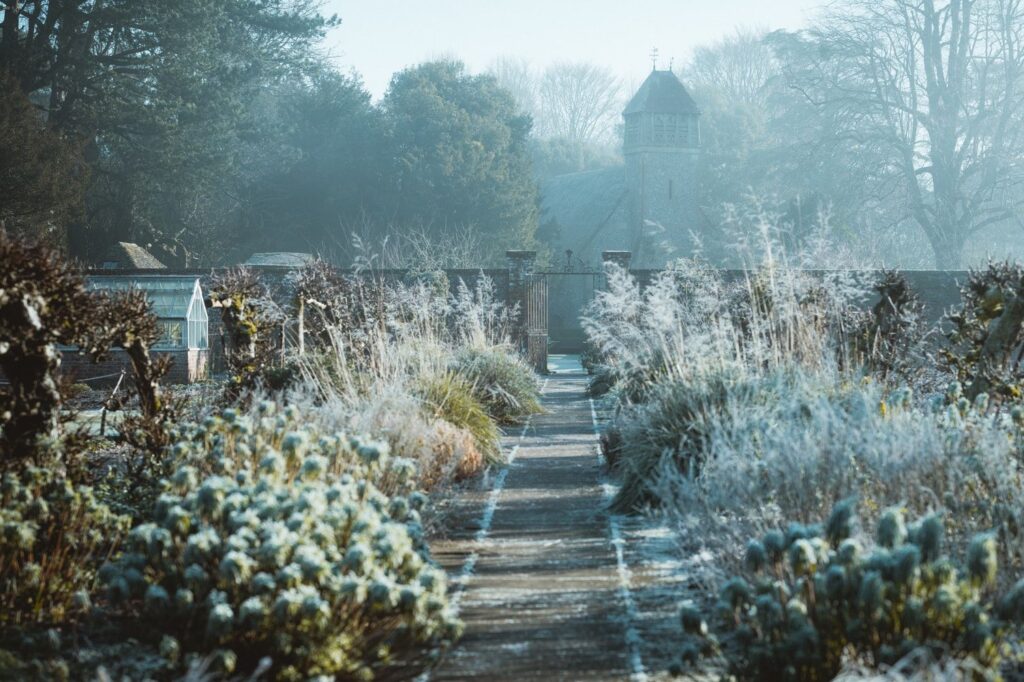The fall is finally here, and the balmy weather, along with the still-warm soil, makes it ideal for planting new flora in your garden. On the flip side, whether you’re getting new plants or already have an established garden full of amazing plants, the ground will be freezing solid and posing a severe risk in a couple of months.
The first hard freeze typically marks the end of the growing season and indicates that you should start taking some precautionary measures to protect your plants. Taking early preventive measures and a little winter pre-planning will ensure that your garden survives frozen roots, plant deaths, and winter scald, among other perils of the cold weather.
Any unexpected cold wave and the constantly changing temperature can take their toll on any plant in any landscape, especially tropical plants. A few simple tips should be able to protect your plants and greatly minimize winter damage. Let’s take a look at the top five tips to safeguard your garden.

Blanket Your Garden Soil With a Layer of Mulch
Did you get your favorite winter blanket out of the storage for that perfect nestling comfort? The blanket helps protect you during the chilly nights and ensures you are pretty comfortable, right? Well, your plants and their roots will need something similar to protect them against the hard freeze.
Keep a close tab on the weather in your region to figure out when the first hard freeze will arrive. You can easily do so by using advanced weather forecasting websites like Tomorrow’s weather.
If you are a gardener with decent experience behind you, you’re probably aware of the various benefits of mulching. The decaying organic matter like leaves keep the smaller plants from upheaving due to colder climate and protect the crowns and tender roots from getting exposed to below zero temperatures.
Additionally, the mulch keeps the soil consistently cold and moist, preventing damaging freeze-thaw cycles and providing insulation for sensitive plants. To properly protect your plants lay down a 3 – 5-inch thick layer of mulch after the first hard freeze has set in. Simply using chopped leaves and pine straws works a miracle for this purpose.
Consider Watering Once a Month During the Winter
One of the most common misconceptions is that since plants are dormant during cold weather, they don’t require watering. Moreover, due to cold weather also the job gets ignored by most. However, plants benefit a great deal from irrigation during the winter month. Especially, evergreen trees and shrubs tend to lose a large amount of water during cold and dry weather.
Unless you are in a region where winter showers are common, it’s a must to provide monthly irrigation to your garden to keep the soil moist. This will help the roots, which continue growing even if the plants are dormant. Moreover, moist soil absorbs and holds more heat than dry soil. Therefore, watering your plants during the cold weather will help protect the roots.
Again, keep a watch on the weather in your locality to predict the arrival of hard-freezing weather and water all your plants at least 24 hours before.
Safeguard Sensitive Trees
If you have sensitive trees or shrubs in your garden with very thin or smooth bark, they might suffer from what’s popularly called sunscald. This damage is caused by the constant freezing and thawing of the water in the trunk during the cold weather. It commonly occurs on the southwest part of the trunk, which is exposed to the afternoon sun.
To protect such trees and shrubs, it’s advised to wrap them with a commercial protective material intended solely for this purpose. Another similarly effective alternative is to whitewash the bark of such trees and plants. This will protect them from sunscald.
While you’re at it, check if your newly planted tree is not stabilized in the ground by seeing if the root crown moves when you sway them gently side by side. If it doesn’t, your tree has taken a good hold in the soil and will survive the winter season. However, if it moves, you will need to stake them to remain steadfast in the ground.
A word of caution though, don’t forget to remove the wrap or whitewash and the stake when the spring season comes around to avoid stunting the growth.
Protect Potted Plants
Potted plants are more prone to winter damage as they don’t have the ground soil for insulation. To start with, find out if your plants are suited for cold weather or are tropical plants. Usually, USDA winter hardiness ratings are used to determine whether a plant is suited for cold weather.
This rating classifies plants and areas in zones numbered 0 to 9. In short, if you’re in a zone 7 area, plants with hardiness in zone 5 will survive in a pot. Bringing your potted plants indoors or simply covering them on chilly nights should see them through the winter season.
There you have it! These were the top tricks to protect your garden and plants against the harsh winter weather. Follow these steps to ensure that come spring, and you’ll have a lush and blooming garden.